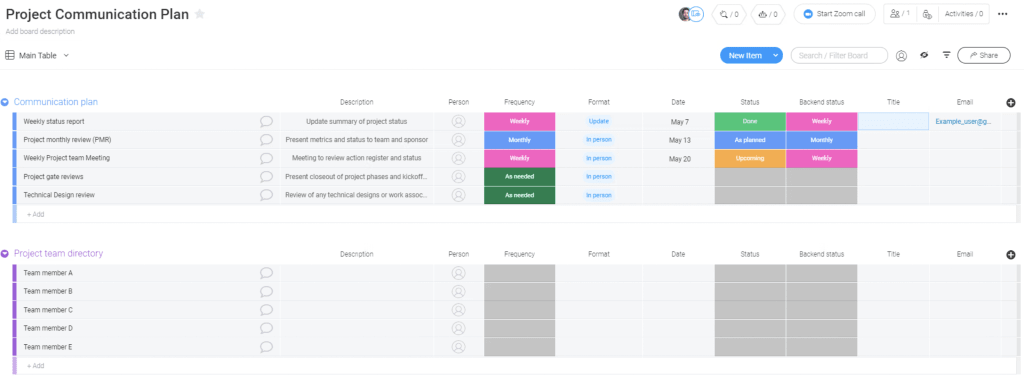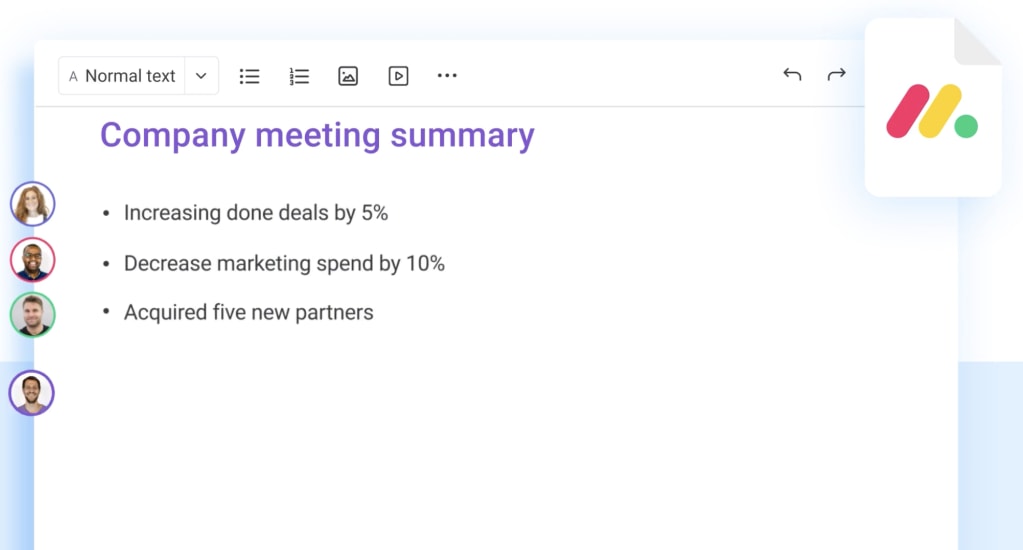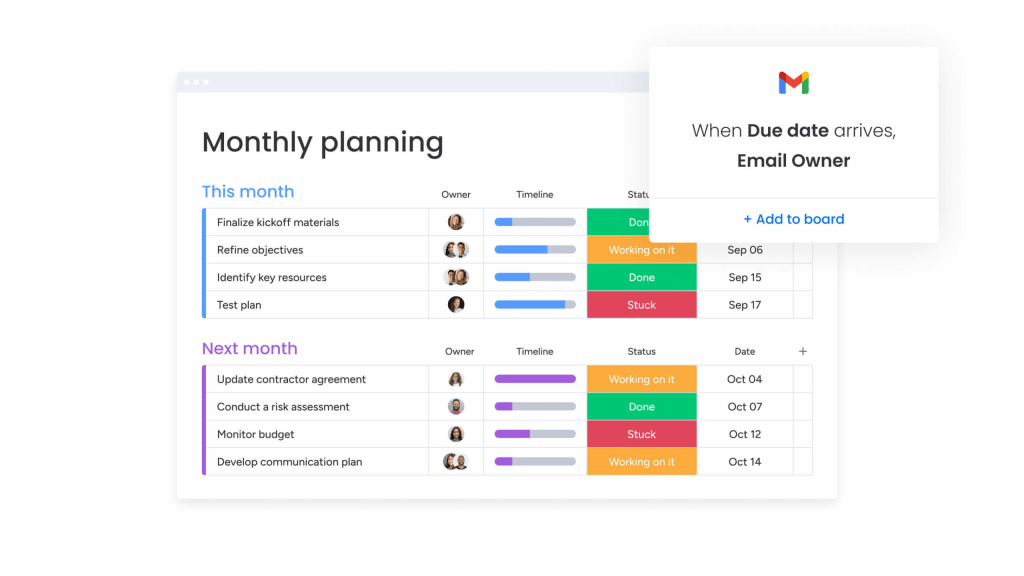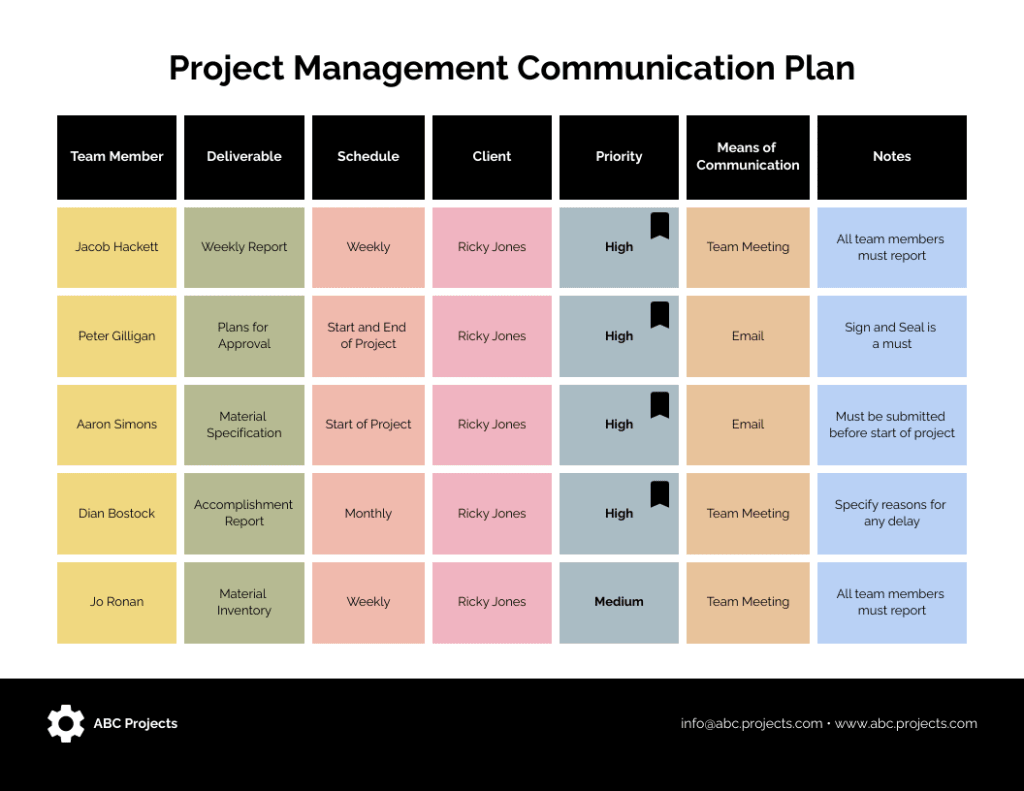As a project manager, communicating with your team isn’t always simple. Team members work remotely, from multiple locations, or on different schedules. A project manager needs to be able to trust their team to get tasks done on time but also shouldn’t micro-manage or constantly request updates. That’s where a project communication plan comes in.
A project communication plan allows you to set expectations and standards. This way, no matter where your team is or what schedule they’re on, they’re all on the same page. Let’s dive into why you need a project management communication plan, how it can benefit your team, and how to create your own.
Get startedWhat is a project management communication plan?
A project management communication plan lays out how crucial information will be communicated to stakeholders and team members throughout a given project. The plan also determines who will be receiving which update, who to turn to with certain updates, and how those people will receive them.
Communication plans matter because effective communication is critical to a project’s success. Having a project management communication plan that thoroughly outlines specific tasks, expectations, due dates, and stakeholders is an essential part of project management.
What should a communication plan include?
A project communication plan should include any or all of the following:
- A specific list of what items need to be communicated, such as tasks, meetings, feedback, or scheduling
- Contacts of all team members and stakeholders involved, including what each person is responsible for
- A schedule of events you have in advance such as deadlines, meetings, goal dates, or check-ins
- Definition of communication frequency, primary channels, or dates
- An outline of your communication goals to ensure decisions are aligned
- Communication style preferences for each stakeholder if it’s different than the set standard, for example, an external freelancer might prefer email over Slack messages
- Types of communication and their expected frequency, such as weekly reports or daily status check-ins
The benefits of a project communication plan
According to a report by Axios on the state of workplace communications, ineffective communication is costing businesses $15,000 per employee every year, or $2 trillion annually across the US. Clearly, there’s an urgent need for businesses to better engage employees, align on communication, and waste less time.
To better understand how project communication plans can help bridge this gap, let’s look at some of the advantages of using one.
Increases transparency
Project communication plans help you increase transparency within your organization. Transparency allows team members to understand project objectives, and by setting a communication plan, ensures all stakeholders know what kind of information to expect and at what frequency.
Improves coordination and collaboration
By granting everyone access to a single document on software like monday.com, anyone involved in a project can easily comment, leave suggestions, or start a discussion. In this way, a communication management plan helps foster collaboration by coordinating work procedures between team members. This encourages ongoing constructive feedback and helps avoid delays to ensure tasks are completed on time.
Ensures efficient use of resources
In all likelihood, your team uses multiple tools and applications to get their work done. This can be confusing when it comes to effective communication.
Creating a communication plan helps streamline communication to ensure it’s done on one app or service, removing redundancies and wasted time switching between apps, and keeping teams focused.
Encourages feedback sharing
Project communication plans set standards for communication within a team, encouraging employees to regularly share feedback, which can in turn improve productivity.
Clarifies roles and responsibilities
A communication plan informs various stakeholders of the roles and responsibilities of each team member of the project with written guidelines. It also demonstrates how decisions will be made and how feedback and comments will be given and received.
Get startedCreate a project communication plan in 4 steps
Writing your own project communication plan doesn’t need to be complicated. Here’s an example of a project communication plan and what it can look like:

In just a few steps, you can create your own plan to fit each project’s needs. Here’s how to get started.
1. Set communication goals based on project needs
First things first, you need to set goals for your communication plan, but in order to do that, you need to identify your project’s specific needs. Depending on the size of the project, number of people involved, its requirements, or other factors, the needs might vary.
Write down these different factors to understand its needs, and from here, you can begin to set your communication goals. For example, your communication plan goal might be to be efficient in your meetings and emails so as not to slow down the pace of the project.
2. Choose communication methods and channels
Next, outline exactly how you will be communicating throughout the project’s lifespan. This can be done through a variety of tools, such as:
- Video meetings
- Status reports
- Communication apps
- Presentations
- Weekly emails
Narrow down the list to a few methods of communication that you think would be best for your project and team. For example, you can decide that day-to-day communication is on an app like monday.com, but you have a weekly Zoom call to get updates from each team member on their responsibilities.
Get started3. Decide on communication frequency
Set your frequency of communication to create a standard for your team. This will help you avoid chasing down updates from different stakeholders. If each of your team members knows that they need to send a status update by email every Monday morning, then they’ll know what to expect and they won’t feel burdened by constant check-ins from their project manager.
4. Identify stakeholders and team members

Finally, you want to have a clear overview of everyone involved in a project. Create a list of team members and stakeholders including their individual responsibilities and contact information and share it with everyone. This way, your entire team can communicate between each other rather than going through the project manager each time they need to inquire or follow up on a task.
What not to include in a project communication plan
We’ve looked at what your plan should include, but in order to keep it organized and on track, try to avoid adding in certain elements like:
- Any details that are confidential or sensitive, such as passwords, credit card numbers, or also personal information
- Personal opinions or biases when it comes to individual team members or stakeholders
- Unclear or unrealistic expectations on how team members should communication, such as asking them to check in on a task status every couple of hours
- A project communication plan shouldn’t go into too many details about a project itself, leave this for a separate project plan or project roadmap
Improve team communication from start to finish with monday.com
Using an app or software can help you create, plan, and implement your communication plan a lot more efficiently than doing it all on your own. Platforms like monday.com come ready with hundreds of templates for you to use to get started quickly, like the project communication plan template.

This template allows you to define your communication plan, set frequency, deadlines, and status, and even create a team member directory. Aside from the template, monday.com also comes packed with other great features to help you keep your communication plan on track.
Collaborate in a living document with monday workdocs

monday workdocs allows team members to collaborate easily in real time on a living document rather than a board. You can add different elements like lists, widgets, and even link to boards to keep everything in one place. This can help your team with anything from brainstorming, taking notes in a meeting, ideating and launching products, and more. Once notes in monday workdocs are ready to action, you can turn them into tasks on any monday.com board you choose.
Keep all communication in one place with integrations

With 70+ apps and 200+ possible integrations, you can keep using the communication tools you’re used to while harnessing the power of an organized communication plan on monday.com. Integrate tools like Zoom, Slack, Microsoft Teams, Google Calendar, Gmail, and more to keep all communications in one place.
Visualize plans and resources with multiple views types
With over 27+ different view types, you can see your communication plan in action. Check the Calendar View to see all scheduled meetings, events, and when you can expect your next update to ensure everything is on track. Use the Timeline View to see if your communication plan matches up with your project delivery plan so that you can adjust accordingly. The Cards View is helpful when you want to see your stakeholder directory clearly and quickly.
Communicate simply with internal communication tools

Communicate easily with your team by onboarding everyone to monday.com. Set task owners to make it clear who’s responsible for each item, update status columns, or send a comment to a specific person in the updates section. You can also create entire boards dedicated to internal communication and guidelines and resources, making this an ideal place to store your project communication plan so that all team members can reference it as needed.
Get startedFAQs
What shouldn’t you include in a communication plan?
A project communication plan shouldn’t include personal or confidential information like passwords, or credit card numbers. You also want to avoid including personal opinions or biases above team members, or too many details about the project itself as that should be left for a separate project plan or project roadmap.
What makes a good communication plan?
A good project communication plan establishes communication goals, identifies stakeholders, and helps clarify roles and expectations as well as sets standards for communication frequency.
How do you write a communication plan?
To write a communication plan, determine your project’s needs, goals, communication methods and channels, frequency, and all relevant stakeholders. From here, you can write your plan in a chart or in on a platform like monday.com to help keep everything organized and accessible.
Clearer communication with monday.com
Project communication plans are just another tool to help you manage your projects, set expectations, and help ensure the final product gets delivered on time. With a platform like monday.com, that process is even easier. Thanks to premade templates and tons of features that encourage communication and collaboration, you can ensure you and your team are always up-to-date on what needs to be done.

